Timing Belts vs Timing Chains: The Difference Between Two Parts
There are so many complicated aspects of timing belts and timing chains that it is tough to know where to start. We'll explain what mechanical engine timing is and why it is needed in a four-stroke internal combustion engine. Then we can get to the good stuff, like what timing belt and timing chains are and how bent valves, broken pistons, and other mechanical carnage can break if the timing belt or chain does.
How Mechanical Timing Works—The Basics
The majority of cars on the road have four-stroke gas engines. It is called a four-stroke engine because it has an intake, compression, power, and exhaust stroke during the combustion process. In one complete four-stroke process, the crankshaft rotates twice and the camshaft(s) will spin once. "Mechanical timing" is what we call the relationship between the rotation of the crankshaft and camshaft(s). This, in turn, is really just controlling the movement of the valves and pistons inside the cylinders. Naturally, you need the intake and exhaust valves to open at a very precise time in relation to the pistons. Without the proper timing of these parts, the engine just won't work. Now, don't get mechanical timing confused with ignition timing, they are two totally different things. Ignition timing is the relationship between the ignition spark and the crankshaft rotation.
What Timing Belts and Timing Chains Do
Timing belts and chains are the devices that make the connection between the crankshaft and camshaft(s). They are not something that you can see when you open your hood. Timing belts and chains are always hidden behind plastic or metal timing covers. These keep the camshaft timing safe no matter what the conditions are outside of the engine. Mud, snow, rocks and dirt should never be able to access the timing components.
As you can imagine, everything timing related needs to be installed very precisely or engine compression will be lost and internal engine damage could potentially be caused. The moment that the crankshaft and camshaft mistime is when the engine completely loses its ability to move air, fuel, and exhaust into and out of the engine. No matter how much fuel and spark you throw at it, it will never run right if the mechanical timing is wrong. Now that we understand what mechanical engine timing is and how the timing belts and timing chains are an integral part of it, let's discuss why some automobiles use one over the other.
What Is a Timing Belt?
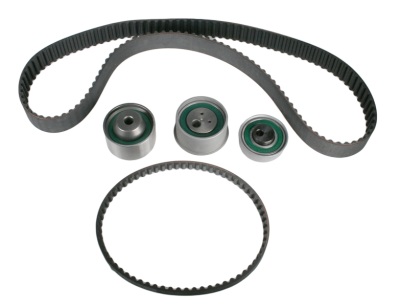
Timing belts are belts made of rubber that snake through a series of pulleys and have mechanical or self-contained hydraulic timing tensioners to keep the proper tension. They connect to the crankshaft and camshaft and are part of the system that keeps the engine timed.
Way back in the mid-1960s, Pontiac came out with an overhead cam, straight-six engine that claims to be the first American car with a rubber timing belt. Before Pontiac unveiled this engine design in 1966, nearly every four-stroke engine used a timing chain. Automotive timing belts then and now are made of rubber, often with fiberglass or Kevlar woven into them for extra strength.
When Should I Change a Timing Belt?
Timing belts are known to be very quiet as they rotate, but they do wear out over time. Most vehicle manufacturers recommend changing timing belts between 60,000 and 100,000 miles, though there are exceptions, both higher and lower.
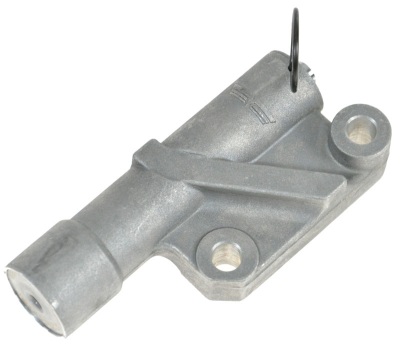
Because timing belts frequently move through pulleys and have hydraulic timing tensioners applying tension on the belt throughout the entire rpm range, these mechanical and hydraulic tensioners and pulleys should always be replaced at the same time as the belt. They are all the same age with the same mileage, so replacing them is a great habit and great insurance. Along with pulleys and belt tensioners, water pumps are often replaced at the same time as timing belts. This is for two reasons: Some water pumps are actually driven by the timing belt itself, and are therefore a liability if they are old and worn out. The other reason is because many water pumps, especially on newer vehicles, are tucked behind the timing belt due to packaging constraints. You wouldn't want to replace the timing belt and then have to take it off again later when your old water pump fails. Doing the job twice is never fun.
What Is a Timing Chain?
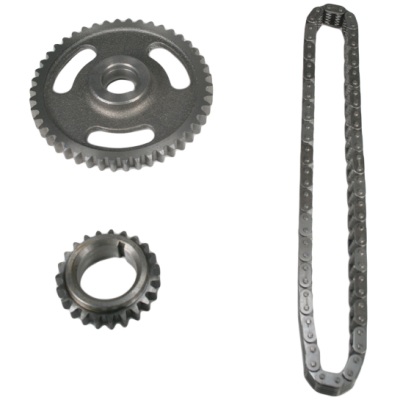
A timing chain looks just like a bicycle chain, but much cleaner. Like the timing belt, they connect to the camshaft and crankshaft and help keep the engine timed.
The beauty of the timing chain is that it typically lasts a very long time. The downfall of timing chains is that they are heavier, generally known to be noisier, and if they do break it is usually catastrophic to all of the surrounding engine parts.
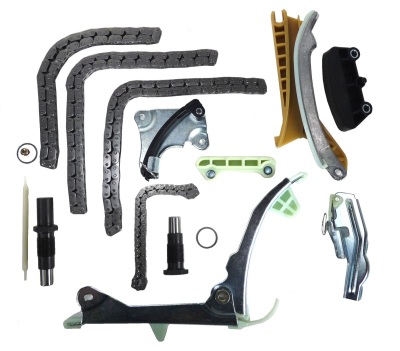
When Should I Change a Timing Chain?
Some car manufacturers recommend replacing it at certain mileage or time intervals, while others claim that the chain does not need to be replaced for the life of the automobile. It really depends on the make and model of the car or truck. Much like automotive timing belts, timing chains have tensioners that keep the chain from flopping around. The difference is that timing chain tensioners are nearly always controlled with the engine oil pressure. As you can imagine, if the engine oil pressure becomes low for whatever reason, the oil-driven timing chain tensioners will lose pressure and the mechanical engine timing will offset. This will cause poor engine performance and give the chain an opportunity to fail in grand fashion.
The other benefit to timing chains is that they rarely have anything to do with the water pump, so replacing them at the same time isn't nearly as necessary as it is with a timing belt. As with everything in life, there are exceptions to this rule. Luckily, your car probably isn't one of them.
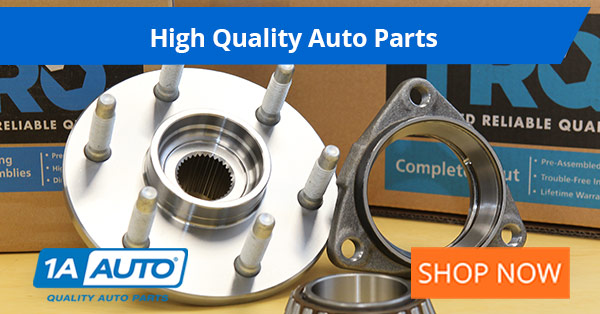
Interference and Non-Interference Engines: How a Broken Timing Belt Can Damage the Engine
You can't talk about timing belts and chains without talking about interference engines. First off, not all engines are interference engines. Some car and truck manufacturers have them and some don't. It is hit or miss thing depending on the vehicle.
Interference Engine
An interference engine is an engine where the pistons and the valves share the same space in the cylinder but at different times. This engine design claims to be great for engine efficiency, but it is definitely not ideal for people who procrastinate on timing belt maintenance. That's because on an interference engine the valves collide with the pistons if the timing belt breaks. When it comes down to it, you really don't want the valves and pistons to meet each other. They can happily share the same space, even multiple times in the same second, but never at the same time.
Non-Interference Engine
On a non-interference engine, you can break the timing belt and it could never cause internal engine damage because the valves and pistons have their own space.
What Can Happen When Timing Belts Break?
Timing belts break most often at start up and shut down of the engine, because that is often when the most tension is on the belt.
Interference Engine
If you have an interference engine, internal engine damage is nearly inevitable, though the amount of damage varies depending on engine speed at the time of failure. If it were to happen on start up or shut down it won't cause irreparable damage. Maybe some bent valves, broken valve guides, etc., but if a timing belt decides to let go at higher rpm, the inside of the engine becomes an amazing, high speed, metal-chewing blender of destruction. When it isn't your car, it can really be incredible to see. The valves typically break clean off of their stems and bounce around the cylinders multiple times per second. This action typically horrifies the piston, sends aluminum shrapnel into the oil pan, and bends the connecting rod. Once the piston completely disintegrates (which it will), and the rod loses its direction in life, it will proceed to poke holes in the engine block and oil pan until the engine is cut completely in half. Needless to say, the engine is not able to be repaired without the help of a time machine.
Non-Interference Engine
If you have a non-interference engine, a broken belt is not really a big deal. You throw a new timing belt kit on it and keep driving.
What Can Happen When Timing Chains Break?
When a timing chain decides to break, it can have varied results as well. If it happens at low speeds, the chain may just slide to the side of the timing cover and not cause any internal engine damage. Simply throw a new timing chain kit on and you are on your way. On the other hand, if the chain lets go at high engine rpm, it will likely whip around the timing cover violently, destroying everything in its path. Again, this can be quite incredible to see, but you really don't want it to happen to your car or truck.
Timing Belts and Timing Chains—Proper Maintenance Intervals
When it comes to automotive maintenance schedules, they exist for good reason. Oil should be changed at certain times, spark plugs should be changed at certain times, and most of all, timing belts and chains should always be changed at the manufacturer's recommended interval. Letting them go into "borrowed time" is risky business and could lead to auto repairs that outweigh the value of the vehicle itself, like a complete engine replacement. The risk highly depends on whether your engine has a belt or a chain and is an interference engine or not. If you don't know if your timing components have ever been changed, then they may be due for one.
Is It Possible to Replace a Timing Belt / Timing Chain Yourself?
Some do-it-yourselfers can easily replace any timing belt or chain given to them without thinking twice. Others could easily destroy their engine. Replacing a timing belt yourself successfully depends on your skill level, the model of vehicle that you are working on, and if any special tools are needed.
Unfortunately, some vehicles do need special tools to hold camshafts and tensioners in the perfect position in order to swap the timing components. Sometimes these tools cost a fortune and don't financially make sense for a one-time use. Regardless of what kind of car, a service manual or how-to video is highly necessary to do the job right. Pulleys and tensioners have very specific torque specifications, and so do many timing covers, and water pumps. Improper torque could easily be enough to cause issues down the road, so following the procedures is paramount.
